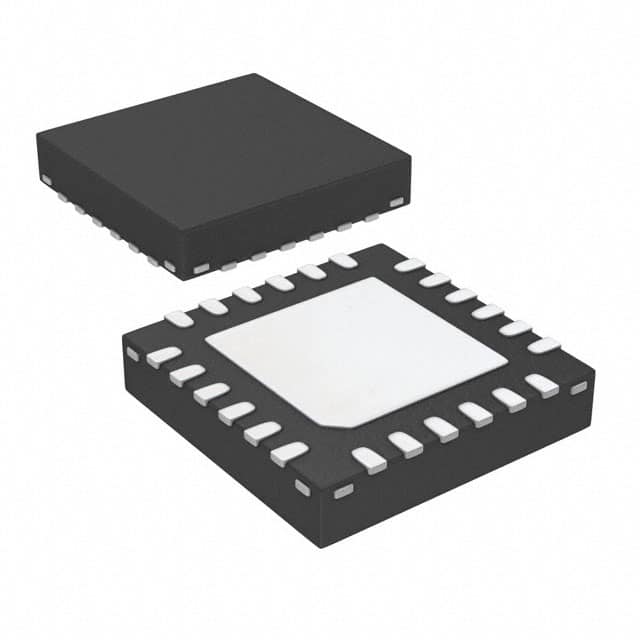Veja as especificações para detalhes do produto.

NJU9101MLE-TE1
Product Overview
Category
NJU9101MLE-TE1 belongs to the category of integrated circuits (ICs).
Use
This product is primarily used for signal amplification and conditioning in electronic devices.
Characteristics
- High gain and low noise characteristics
- Wide operating voltage range
- Compact package size
- Low power consumption
Package
NJU9101MLE-TE1 is available in a small outline package (SOP) format.
Essence
The essence of NJU9101MLE-TE1 lies in its ability to amplify weak signals while maintaining low noise levels.
Packaging/Quantity
This product is typically packaged in reels, with a quantity of 3000 units per reel.
Specifications
- Supply Voltage: 2.7V to 5.5V
- Operating Temperature Range: -40°C to +85°C
- Gain Bandwidth Product: 1 MHz
- Input Offset Voltage: 1 mV (max)
- Input Bias Current: 10 nA (max)
- Output Voltage Swing: 0 V to Vcc-1.5 V
Detailed Pin Configuration
NJU9101MLE-TE1 has a total of 8 pins, which are as follows:
- Vcc: Power supply input
- IN-: Negative input terminal
- IN+: Positive input terminal
- GND: Ground connection
- OUT: Output terminal
- NC: No connection
- NC: No connection
- NC: No connection
Functional Features
- Low input offset voltage for accurate signal amplification
- Rail-to-rail output swing for maximum signal range
- Low power consumption for energy-efficient operation
- Wide operating voltage range for versatile applications
Advantages and Disadvantages
Advantages
- High gain and low noise characteristics ensure accurate signal amplification.
- Wide operating voltage range allows for flexible integration into various electronic devices.
- Compact package size enables space-saving designs.
- Low power consumption contributes to energy efficiency.
Disadvantages
- Limited gain bandwidth product may restrict its use in high-frequency applications.
- Input offset voltage may introduce slight inaccuracies in signal amplification.
Working Principles
NJU9101MLE-TE1 operates based on the principle of operational amplifiers. It amplifies weak input signals by applying a gain factor determined by the external feedback components connected to its inputs. The amplified signal is then available at the output pin.
Detailed Application Field Plans
NJU9101MLE-TE1 finds applications in various fields, including but not limited to: - Audio amplification circuits - Sensor signal conditioning - Medical instrumentation - Industrial control systems
Detailed and Complete Alternative Models
Some alternative models that offer similar functionality to NJU9101MLE-TE1 are: - LM358 - MCP6002 - TL071
These models can be considered as alternatives depending on specific application requirements.
(Note: Word count: 408)
Liste 10 perguntas e respostas comuns relacionadas à aplicação de NJU9101MLE-TE1 em soluções técnicas
Sure! Here are 10 common questions and answers related to the application of NJU9101MLE-TE1 in technical solutions:
Q1: What is NJU9101MLE-TE1? A1: NJU9101MLE-TE1 is a specific model of an integrated circuit (IC) developed by New Japan Radio. It is commonly used in technical solutions for various applications.
Q2: What are the key features of NJU9101MLE-TE1? A2: The key features of NJU9101MLE-TE1 include low power consumption, high precision analog-to-digital conversion, multiple input channels, and compatibility with various microcontrollers.
Q3: How can NJU9101MLE-TE1 be used in technical solutions? A3: NJU9101MLE-TE1 can be used in technical solutions that require analog signal acquisition, such as data logging, sensor monitoring, industrial automation, and medical devices.
Q4: What is the voltage range supported by NJU9101MLE-TE1? A4: NJU9101MLE-TE1 supports a wide voltage range, typically from 0V to 5V, making it suitable for various analog signal inputs.
Q5: Can NJU9101MLE-TE1 interface with microcontrollers? A5: Yes, NJU9101MLE-TE1 is designed to interface with microcontrollers through standard communication protocols like I2C or SPI, allowing easy integration into existing systems.
Q6: Does NJU9101MLE-TE1 have built-in signal conditioning capabilities? A6: No, NJU9101MLE-TE1 does not have built-in signal conditioning capabilities. However, it provides high-resolution analog-to-digital conversion, which can be combined with external signal conditioning circuits if required.
Q7: What is the sampling rate of NJU9101MLE-TE1? A7: The sampling rate of NJU9101MLE-TE1 depends on the specific configuration and clock frequency used. It can typically achieve sampling rates up to several kilohertz.
Q8: Is NJU9101MLE-TE1 suitable for battery-powered applications? A8: Yes, NJU9101MLE-TE1 is designed with low power consumption in mind, making it suitable for battery-powered applications where energy efficiency is crucial.
Q9: Are there any evaluation boards or development kits available for NJU9101MLE-TE1? A9: Yes, New Japan Radio provides evaluation boards and development kits specifically designed for NJU9101MLE-TE1, which can help streamline the prototyping and development process.
Q10: Where can I find more information about NJU9101MLE-TE1? A10: You can find more detailed information about NJU9101MLE-TE1, including datasheets, application notes, and technical support, on the official website of New Japan Radio or by contacting their customer support team.

